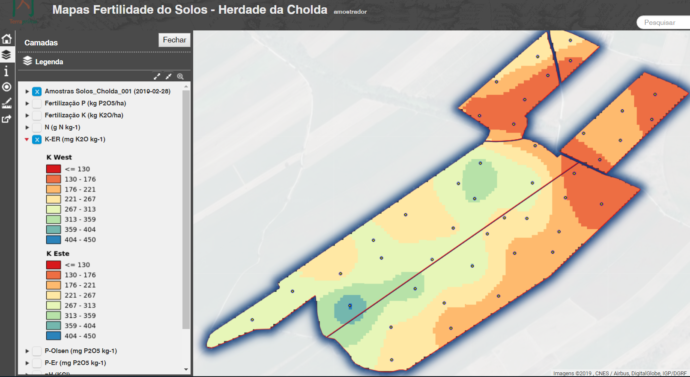Rational Fertilization is one of the most challenging topics in Precision Agriculture.
Quinta da Cholda uses as a method of calculating fertilization needs, a combination of two methods. First, the average level of export of nutrients based on the average yield of the field. Secondly, the results from the analyses of the soil before the seeding.
In both cases, the applications were the result of an average value within the field. As our fields are very heterogeneous, and the productions vary greatly within the same field, we believe that we have made many mistakes in terms of the real needs of the crops due to that spatial variability of the fields.
As such, we have been developing a new method of determining the real needs of fertilization. In 2018, we’ve selected several points to collect soil samples based on the apparent electroconductivity variability of the soil. Fertilizer applications (Phosphorus and Potassium) were made with a VRT implement to meet the needs detected in the soil analyzes. In our opinion, the first results were very encouraging, and we kept the same criteria during this year of 2019 since we believe it has increasing benefits over the traditional method.
In 2019 we went even further, and we did a complete survey of the nutrient map of another field. We have started a new way to determine the needs of fertilization. Now, we have increased the number of soil samples considerably, from 1 sample per 10 hectares to 1 sample per 2 hectares. The method to determine the location of the samples is a combination of past productivity and apparent electroconductivity of the soil. We have now all the results in a database that can generate nutrient maps and create prescription maps for the different zones of the fields in the form of files which can then transferred to the VRT implement.
At the end of the year, with the help of the productivity map, we will evaluate the evolution of the results. We believe that with this method we are contributing to an optimization of the production based on the increase of the efficiencies of the production factors, thus leading to better economic and environmental results.
Links to YouTube videos explaining the process

